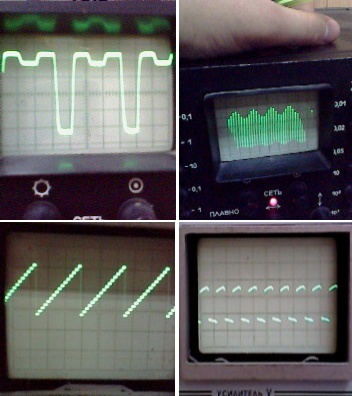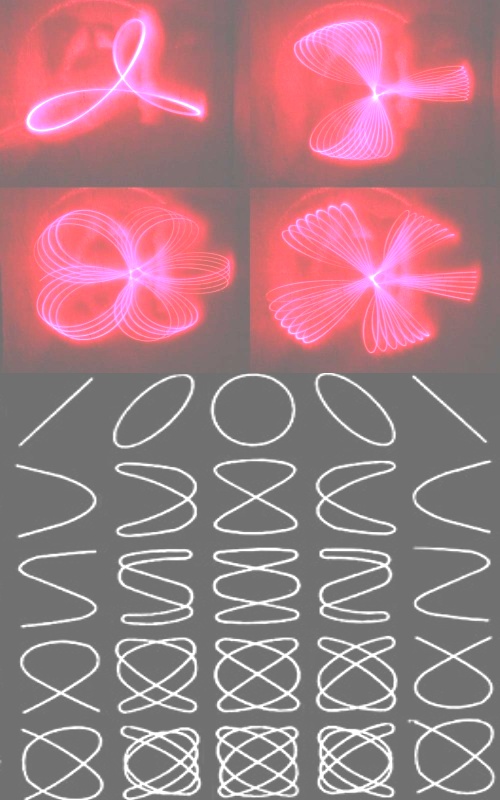Probably many of the readers of this article know such a common, versatile device as an oscilloscope, which is used for observing digital and analog signals. This article is useful for beginners or inexperienced radio amateurs who are just thinking about buying an oscilloscope. The following information is informative, but may help beginners in choosing an oscilloscope.
Use of an oscilloscope, what an oscilloscope is needed for:
The main purpose for which the oscilloscope is used is to observe any signals present in radio electronic circuits Figure 1.

With the oscilloscope you can even observe certain processes and phenomena, such as hysteresis loops (figure 2) or Lissajous figures (figure 3).


In recent years, oscilloscopes have undergone many modifications and improvements for every taste and purse. There are oscilloscopes with memory, which can display even non periodic signals, there are digital oscilloscopes, which are very convenient to connect to a computer and convert the signals as you want through special software applications.
It is a sad fact that the oscilloscope remains one of the most expensive devices, which almost every radio amateur wants to have in his home workshop. And if you are lucky enough to get one, then use it wisely for the sake of those who do not yet have an oscilloscope 🙂 The oscilloscope is the most expensive instrument.
Using an oscilloscope, how to work with an oscilloscope:
Most oscilloscopes have a coordinate grid on their screen (on the CRT screen), which allows you to determine the parameters of the studied signal quite accurately, taking into account the appropriate position of the range switches. Naturally, before starting measurements your oscilloscope must be calibrated. Failure to follow this mandatory procedure will lead to incorrect results.
It is also necessary to understand what, how, and why to measure? Sometimes, to measure these or those signals, additional circuits and devices “add-ons to the oscilloscope” such as dividers, input capacitors, etc. are needed.
Also, by no means neglect the ground loop — it not only has a protective function, but is also directly necessary for the measurement.
The most important thing! Before you start measuring, read the oscilloscope instruction manual, or better yet, learn it for the most efficient use of the instrument.
Selection of an oscilloscope:
If you decide to buy an oscilloscope (having saved enough money), consider its condition in case you buy a second-hand oscilloscope. The oscilloscope you have purchased should last long enough if it is used properly. Dual-beam oscilloscopes are not much more expensive than single-beam oscilloscopes, so it is better to buy them. I also recommend to buy a device with a wide bandwidth (at least 25 MHz) and maximum vertical sensitivity (about 10mV/cm).
It is also necessary to pay attention to the legibility and clarity of the markings on the controls and the condition of the switches. The screen grid should be clearly visible, of course it is necessary to check the quality of the signal image. It is important to make sure that a focused sweep across the screen is obtained at maximum brightness.
Many instruments are equipped with internal calibration, this too should not be overlooked. The probe must be especially demanding — it must not only be convenient and shielded, but also must transmit the measured signal well (without weakening or distorting it).
And most importantly, before you go into a store where measuring instruments are sold, you should get acquainted with several models of oscilloscopes, choose the most affordable and suitable for you and familiarize yourself with it (read reviews) so that your purchase will justify the money invested in it.

